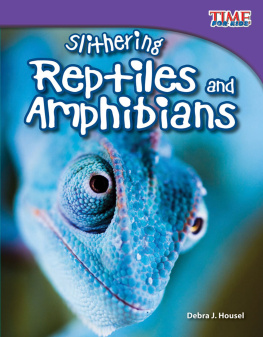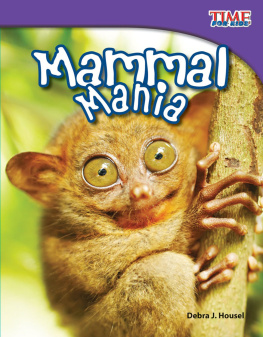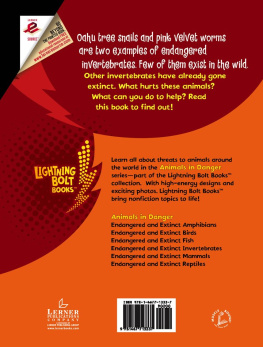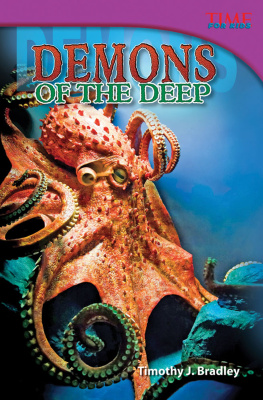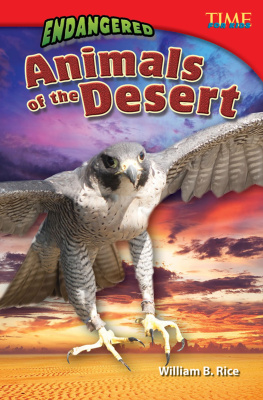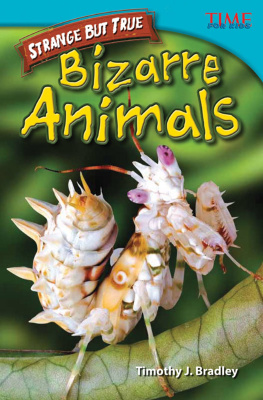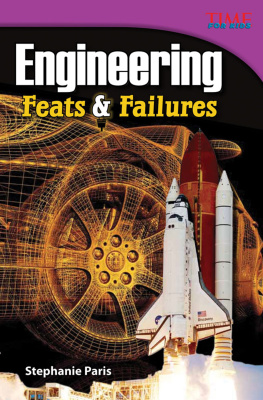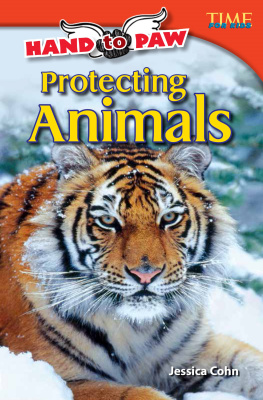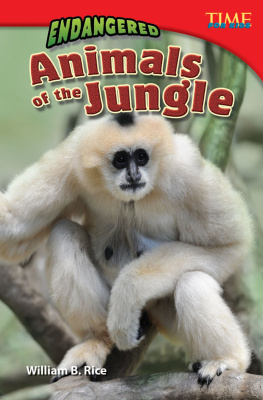
Incredible Invertebrates Housel
Incredible
Invertebrates
Debra J. Housel


Teacher Created Materials
5301 Oceanus Drive
Huntington Beach, CA 92649-1030
http://www.tcmpub.com
ISBN 978-1-4333-3660-7
2012 Teacher Created Materials, Inc.
Image Credits
Cover Dwight Smith/Shutterstock; p.3 Mariusz S. Jurgielewicz/Shutterstock; p.4-5 daimblond/
Shutterstock; p.4 formiktopus/Shutterstock; p.5 top bottom: bmaki/Shutterstock; Levent Konuk/
Shutterstock; p.6-7 ivylingpy/Shutterstock; p.6 Pavel Mikoska/Shutterstock; p.7 Oliver Homann/
Shutterstock; p.8-9 alslutsky/Shutterstock; p.8 Christian Ziegler/Newscom; p.9 Frederick R.
McConnaughey/Photo Researchers, Inc.; p.9 inset: Dusty Cline/Shutterstock; p.10-11 Marjan Visser
Photography/Shutterstock; p.10 John A. Anderson/Shutterstock; p.11 top to bottom Eye of Science/
Photo Researchers, Inc.; Mark William Penny/Shutterstock; Dwight Smith/Shutterstock; p.12-13
Khoroshunova Olga/Shutterstock; p.12 Dennis Sabo/Shutterstock; p.13 top to bottom: Dudarev
Mikhail/Shutterstock; JW.Alker/Photolibrary; p.14-15 mashe/Shutterstock; p.14 Kokhanchikov/
Shutterstock; p.15 top to bottom: Francesc Cebria [www.ub.edu/planaria]; p.16-17 daimblond/
Shutterstock; p.16 Igor Kovalchuk/Shutterstock; p.17 Bob Gibbons/Photo Researchers, Inc.; p.18-19
RAGMA IMAGES/Shutterstock; p.18 JonMilnes/Shutterstock; p.18 inset: lfstewart/Shutterstock; p.19 L.
Newman & A. Flowers/Photo Researchers, Inc.; p.20-21 Mostovyi Sergii Igorevich/Shutterstock; p.20
left to right: Stuart Westmorland/Getty Images; p.21 Brian J. Skerry, George Grall/National Geographic
Image Collection; p.22-23 daimblond/Shutterstock; p.22 Audrey Snider-Bell/Shutterstock; p.22 inset:
Audrey Snider-Bell/Shutterstock; p.23 Rick Neese; p.24-25 NatalieJean/Shutterstock; p.24 Seow
Yen Choon Kelvin/Shutterstock; p.25 Dr. Morley Read/Shutterstock; p.25 inset: Audrey Snider-Bell/
Shutterstock; p.26-27 Khoroshunova Olga/Shutterstock; p.26 left to right: Yva Momatiuk & John
Eastcott/Photo Researchers, Inc.; Virginia P. Weinland/Photo Researchers, Inc.; p.28 Ragma Images/
Shutterstock; background: picturepartners/Shutterstock; Lukiyanova Natalia/frenta/Shutterstock
Based on writing from TIME For Kids.
TIME For Kids and the TIME For Kids logo
are registered trademarks of TIME Inc.
Used under license.
Consultants
Timothy Rasinski, Ph.D.
Kent State University
Bill Houska, D.V.M.
James K. Morrisey, D.V.M.
Publishing Credits
Dona Herweck Rice, Editor-in-Chief
Robin Erickson, Production Director
Lee Aucoin, Creative Director
Conni Medina, M.A.Ed., Editorial Director
Jamey Acosta, Editor
Heidi Kellenberger, Editor
Lexa Hoang, Designer
Lesley Palmer , Designer
Stephanie Reid, Photo Editor
Rachelle Cracchiolo, M.S.Ed., Publisher
Synched Read-Along Version by:
Triangle Interactive LLC
PO Box 573
Prior Lake, MN 55372
ISBN-13: 978-1-68444-839-5 (e-book)

Table of Contents
What Is an Invertebrate? .................................
Simple Invertebrates ......................................
Mollusks ........................................................... 16
Arthropods ....................................................... 22
Glossary ............................................................ 27
Index ................................................................. 28

What Is an Invertebrate?
Swish, squirm, wiggle. Creep, creep,
crawl. Most animals move, but many cannot
move as you do. You bend, run, hop, and climb.
Some animals swish, squirm, wiggle, creep, or
crawl. Others cant move at all! These animals are
called invertebrates (in-VUR-tuh-breyts) animals
without backbones.
blue crayfish

There are more than one million
different invertebrates.
jellyfish
snail

Invertebrates bodies are much simpler
than yours. Instead of brains, they have a bundle
of cells called a ganglia (GANG-glee-uh). This
controls their bodies just as your brain controls
yours. But since they lack brains, these animals
cannot do many of the things that you can.
Invertebrates can be found in the air, under
the water, and on land. Some are carnivores
(KAHR-nuh-vohrs). They eat other animals.
Ladybugs, for example, can eat bugs a day!
a ladybug eating aphids

Sea anemones eat other
sea animals.

Wow!
Invertebrates have rest periods,
but they never fall asleep.
Swarms of grasshoppers may
eat every green thing for miles.

Other invertebrates are herbivores
(HUR-buh-vohrs), or plant eaters. Snails,
for example, eat leaves, vegetables, and fruit.
Some invertebrates eat meat and plants.
They are omnivores (OM-nuh-vohrs).
Earthworms, for example, eat tiny pieces of
rotting plants and animals found in the soil.
This black-lip pearl oyster eats
the dead plant and animal matter
found in seawater.
earthworm

Simple Invertebrates
You have a heart, a stomach, and lungs. But not
all animals have these organs. Sponges and coral
do not.
Some invertebrates have soft bodies and a



